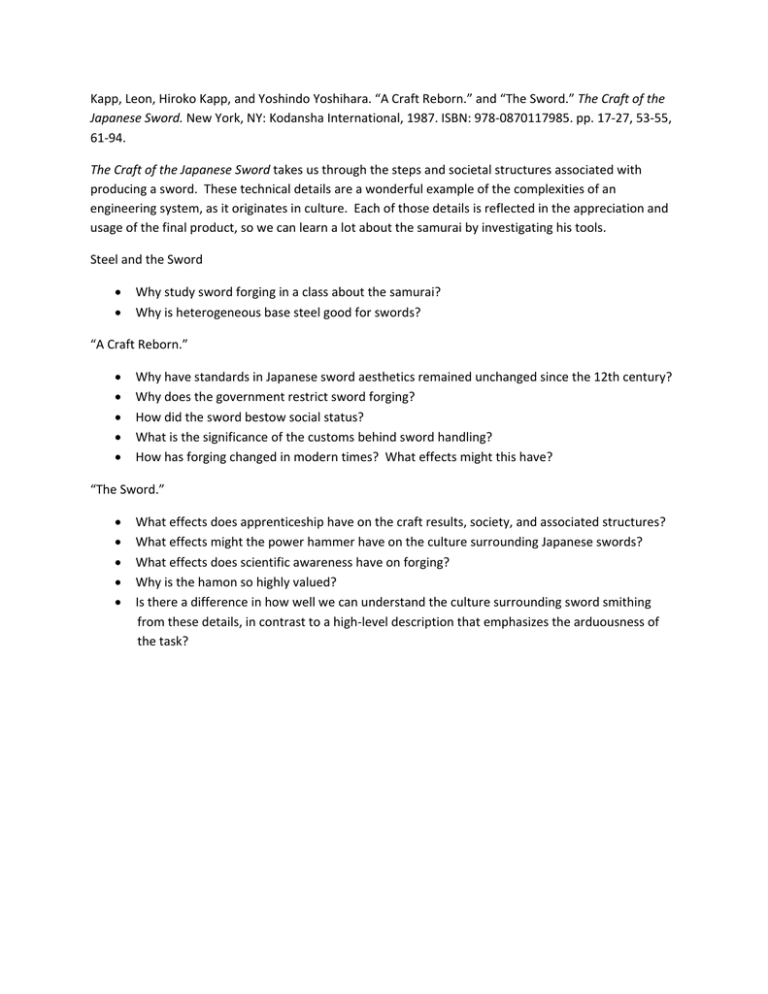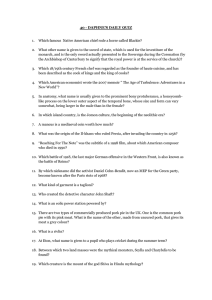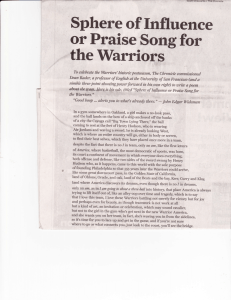The 61‐94. producing a sword. These technical details are a wonderful... Japanese
advertisement

Kapp, Leon, Hiroko Kapp, and Yoshindo Yoshihara. “A Craft Reborn.” and “The Sword.” The Craft of the Japanese Sword. New York, NY: Kodansha International, 1987. ISBN: 978‐0870117985. pp. 17‐27, 53‐55, 61‐94. The Craft of the Japanese Sword takes us through the steps and societal structures associated with producing a sword. These technical details are a wonderful example of the complexities of an engineering system, as it originates in culture. Each of those details is reflected in the appreciation and usage of the final product, so we can learn a lot about the samurai by investigating his tools. Steel and the Sword • Why study sword forging in a class about the samurai? • Why is heterogeneous base steel good for swords? “A Craft Reborn.” • • • • • Why have standards in Japanese sword aesthetics remained unchanged since the 12th century? Why does the government restrict sword forging? How did the sword bestow social status? What is the significance of the customs behind sword handling? How has forging changed in modern times? What effects might this have? “The Sword.” • • • • • What effects does apprenticeship have on the craft results, society, and associated structures? What effects might the power hammer have on the culture surrounding Japanese swords? What effects does scientific awareness have on forging? Why is the hamon so highly valued? Is there a difference in how well we can understand the culture surrounding sword smithing from these details, in contrast to a high‐level description that emphasizes the arduousness of the task? MIT OpenCourseWare http://ocw.mit.edu ES.272 Culture Tech Spring 2003 For information about citing these materials or our Terms of Use, visit: http://ocw.mit.edu/terms.


